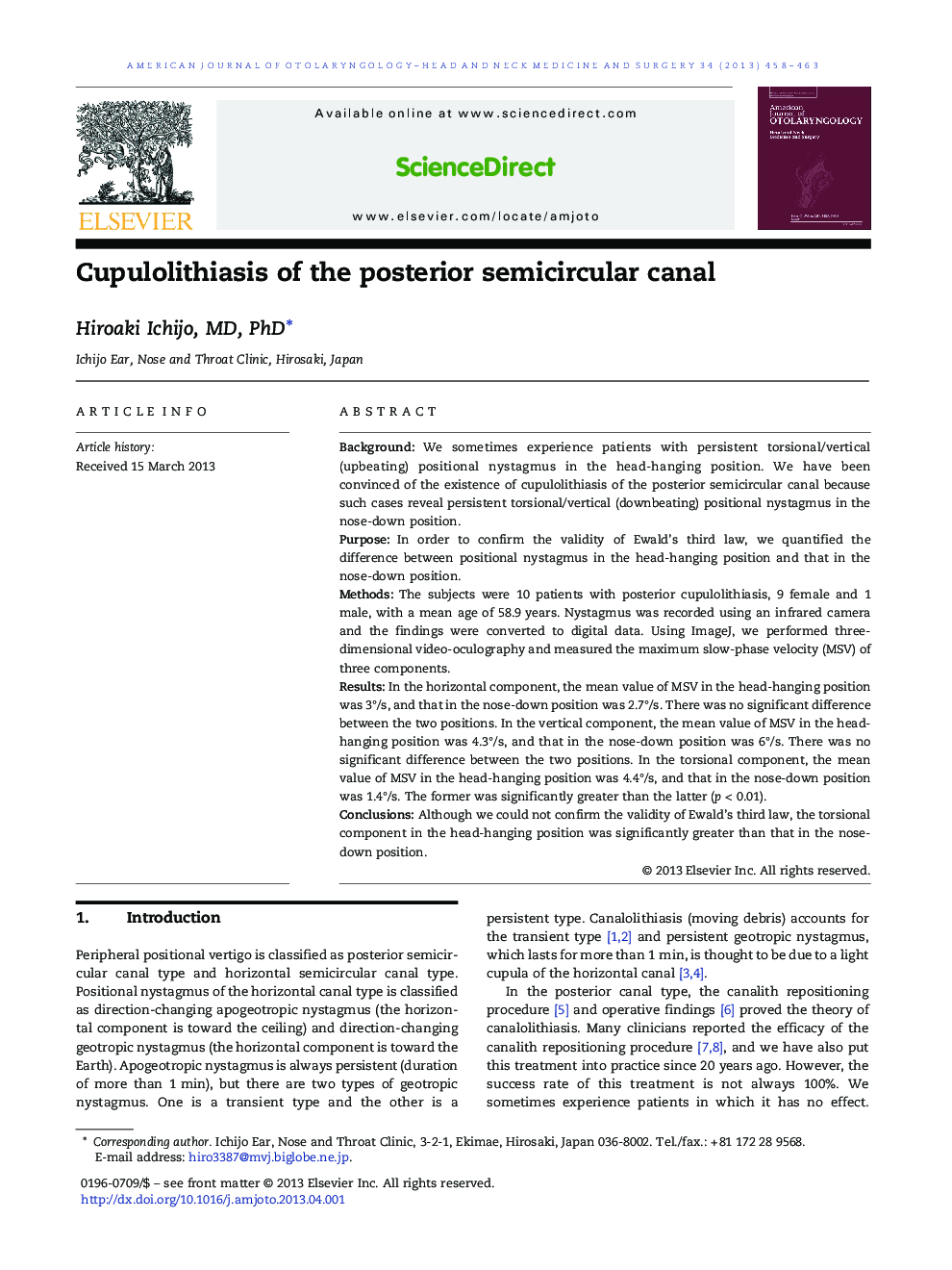| Article ID | Journal | Published Year | Pages | File Type |
|---|---|---|---|---|
| 4103139 | American Journal of Otolaryngology | 2013 | 6 Pages |
BackgroundWe sometimes experience patients with persistent torsional/vertical (upbeating) positional nystagmus in the head-hanging position. We have been convinced of the existence of cupulolithiasis of the posterior semicircular canal because such cases reveal persistent torsional/vertical (downbeating) positional nystagmus in the nose-down position.PurposeIn order to confirm the validity of Ewald's third law, we quantified the difference between positional nystagmus in the head-hanging position and that in the nose-down position.MethodsThe subjects were 10 patients with posterior cupulolithiasis, 9 female and 1 male, with a mean age of 58.9 years. Nystagmus was recorded using an infrared camera and the findings were converted to digital data. Using ImageJ, we performed three-dimensional video-oculography and measured the maximum slow-phase velocity (MSV) of three components.ResultsIn the horizontal component, the mean value of MSV in the head-hanging position was 3°/s, and that in the nose-down position was 2.7°/s. There was no significant difference between the two positions. In the vertical component, the mean value of MSV in the head-hanging position was 4.3°/s, and that in the nose-down position was 6°/s. There was no significant difference between the two positions. In the torsional component, the mean value of MSV in the head-hanging position was 4.4°/s, and that in the nose-down position was 1.4°/s. The former was significantly greater than the latter (p < 0.01).ConclusionsAlthough we could not confirm the validity of Ewald's third law, the torsional component in the head-hanging position was significantly greater than that in the nose-down position.
